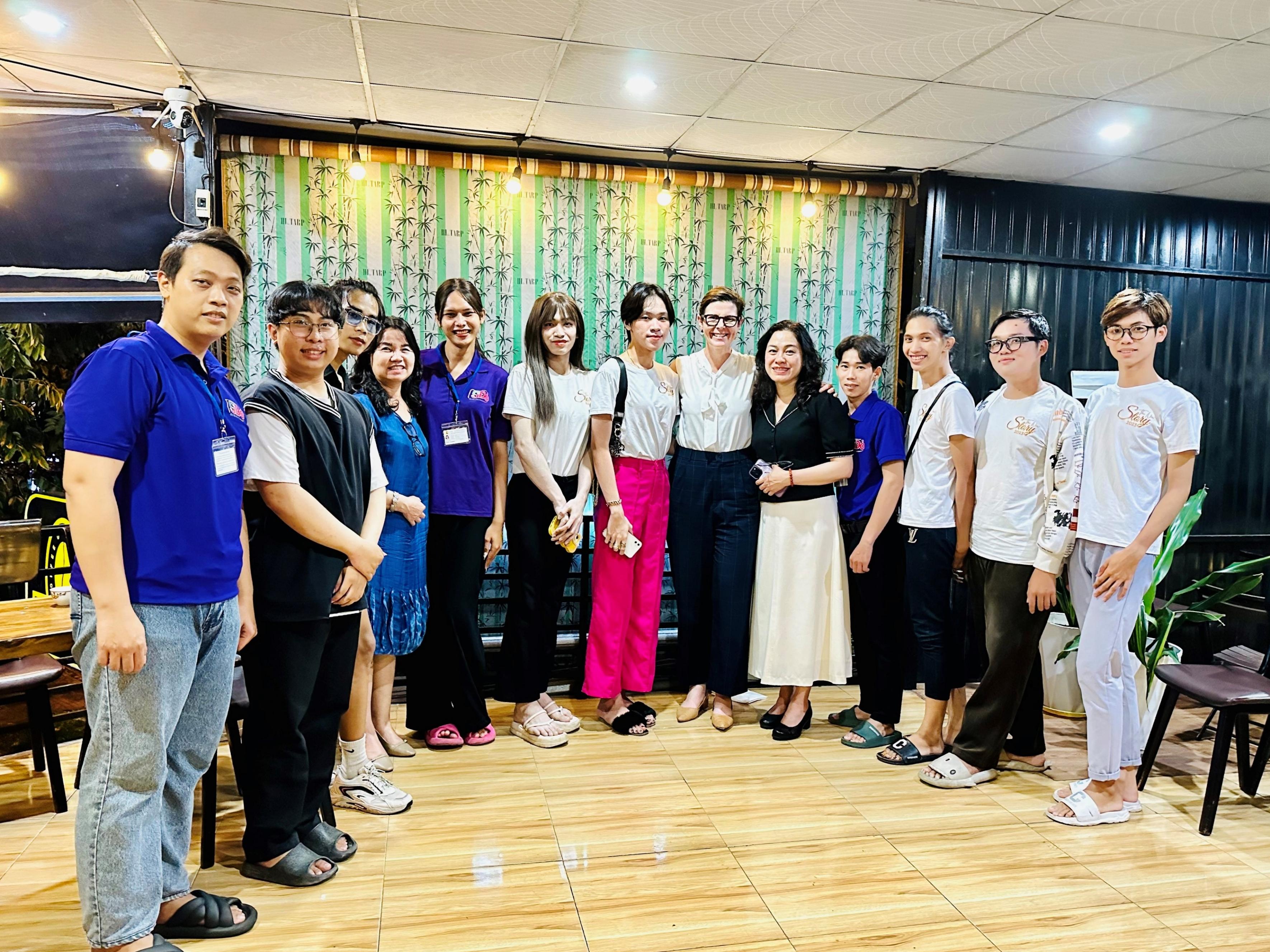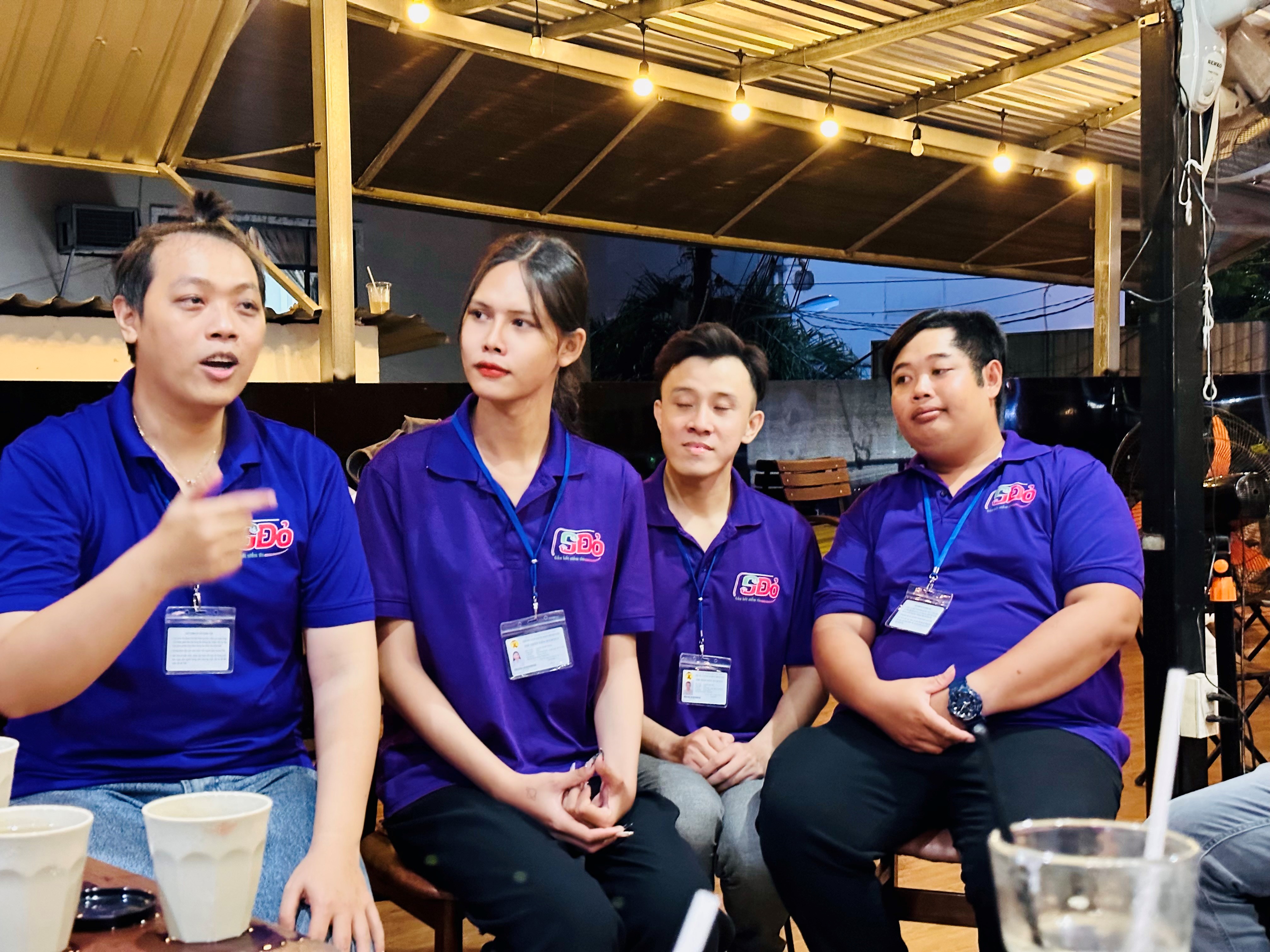 In Can Tho City in Viet Nam’s Mekong Delta, the country’s passion for coffee is the secret weapon of a community-based organization (CBO) called Red S (S Đỏ).
In Can Tho City in Viet Nam’s Mekong Delta, the country’s passion for coffee is the secret weapon of a community-based organization (CBO) called Red S (S Đỏ).
Over sweetened iced coffee, Red S’s educators share information on HIV/AIDS, syphilis and hepatitis. They are reaching many of the people most affected by HIV, but who fear going to a health centre for information, testing or treatment.
“In 2009, when I learned that my boyfriend was infected with HIV, I was very scared and went for an HIV test,” said Red S Team Leader Dang Quoc Phong.
“While waiting for the results, I realized that if I had no one to confide in, waiting would be torture. I applied to be a community outreach worker so I could share my experiences with people in the same situation,” he said.
Because Red S’s peer educators are themselves men who have sex with men (MSM) including bisexual men, or transgender women, they understand the needs of the people seeking their services, are non-judgmental, can build trust quickly, and offer confidential services. Red S organizes small group discussions for people to share their concerns or ask questions face-to-face, over a cup of coffee. Red S also uses social media to encourage people to be tested and treated for sexually- transmitted infections (STIs).
Red S is one of the CBOs in Can Tho City that the WHO is partnering with, alongside the Can Tho Centre for Disease Control (CDC), to support the Ministry of Health in the scale-up of community-based testing in Viet Nam.

Community outreach is playing a crucial role in working towards the goal of Viet Nam’s National Strategy to End the AIDS Epidemic by 2030. Viet Nam aims to reach a target known as 90-90-90 by 2025, where 90% of people who are living with HIV know their HIV status, 90% of people who know that they are living with HIV are on lifesaving antiretroviral treatment, and 90% of people who are on treatment have a suppressed viral load, which means they cannot transmit HIV to their sexual partners and are at low risk of transmitting it to their children. After reaching this target, Viet Nam aims to reach 95-95-95 by 2030.
However, the testing coverage is low among key target populations. For example, only 61% of people who inject drugs, 72% of sex workers and 84% of MSM knew their HIV status in 2021 and 2022, according to UNAIDS. These low numbers are one of the challenges that CBOs like Red S are working to address.
Between January and October 2023, its dedicated and committed peer educators provided counselling and testing for HIV, syphilis and hepatitis C to almost 300 clients. They also tested 260 people for hepatitis B, identified 23 people who had HIV, 12 people who had syphilis and five who had hepatitis B. Where appropriate, clients were linked to health care facilities for diagnosis and treatment such as antiretroviral treatment (ARV) for HIV.
An evaluation found the organization very successful at reaching young men aged 16-24; about 87% of whom were MSM, and with 77% having never been tested before.
Although overall testing numbers are relatively small, they contribute in important ways to complementing other approaches such as testing at health care facilities and allowing people to order HIV self-tests (HIVST) through a website.
Red S’s Mr Phong said, “There are still many people in our communities infected with HIV but they have not tested before as they don’t want to go to health facilities. New HIV-positive cases are detected every week or month, which demonstrates that providing community-based testing is the right direction. We provide not only HIV testing, but also syphilis, and hepatitis C and B testing.
“Our work helps members of the community know their HIV status and be connected to early treatment so they can maintain their health, career and life.”
WHO Viet Nam Representative Dr Angela Pratt said, “In Viet Nam and globally, we have an amazing opportunity. We can end AIDS as a public health threat by 2030. We even know how; support communities at the frontlines.
“The theme of this year’s World AIDS Day, 1 December, is Let Communities Lead. We are shining a light on how community-led interventions like Red S’s work are central to enabling the end of AIDS as a public health threat. This is much more than a celebration of the achievements of communities, it is a call to action to enable and support communities in their leadership roles.
“Organizations like Red S offer a wonderful, trusting way to deliver life-saving health information – over coffee and conversation.
“Getting tested for HIV is the only way to find out if you are infected. Knowing your status enables you to protect your health and the health of those around you.”




